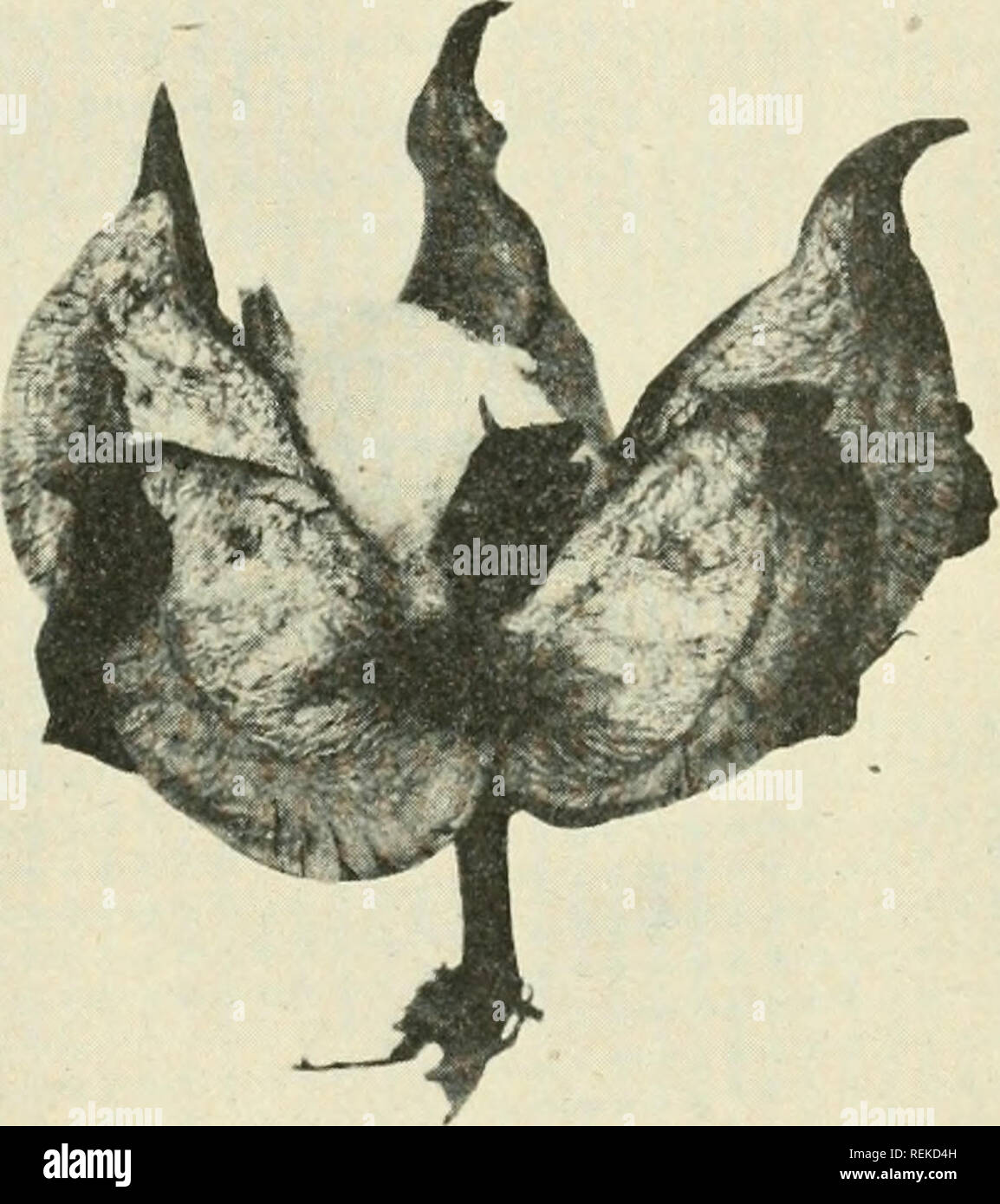. Circular. Agriculture; Agriculture -- United States. SUPERNUMERARY CARPELS TN COTTON BOLLS. 27 the season, though the days are hot and dry. As the normal period of growth and development of the plant is at night, it seems not unreasonable to suppose that the low temperatures might induce such abnormalities. This abnormality has also been observed at other points where the growing seasons are limited or the nights cool, such as Kerrville, Tex., and Chico, Cal. OCCURRENCE AT CLARKSVILLE, TEX. During the autumn of 1912 many unusually good examples of these supernumerary carpels were observed at

Image details
Contributor:
The Book Worm / Alamy Stock PhotoImage ID:
REKD4HFile size:
7.1 MB (287.3 KB Compressed download)Releases:
Model - no | Property - noDo I need a release?Dimensions:
1489 x 1677 px | 25.2 x 28.4 cm | 9.9 x 11.2 inches | 150dpiMore information:
This image is a public domain image, which means either that copyright has expired in the image or the copyright holder has waived their copyright. Alamy charges you a fee for access to the high resolution copy of the image.
This image could have imperfections as it’s either historical or reportage.
. Circular. Agriculture; Agriculture -- United States. SUPERNUMERARY CARPELS TN COTTON BOLLS. 27 the season, though the days are hot and dry. As the normal period of growth and development of the plant is at night, it seems not unreasonable to suppose that the low temperatures might induce such abnormalities. This abnormality has also been observed at other points where the growing seasons are limited or the nights cool, such as Kerrville, Tex., and Chico, Cal. OCCURRENCE AT CLARKSVILLE, TEX. During the autumn of 1912 many unusually good examples of these supernumerary carpels were observed at Clarksville, Tex., occurring commonly in otherwise normal bolls. They were detected only in the bolls at the base of the plant—those developed earliest in the spring. The spring of that year was rather late and somewhat cooler than usual, and it may be on this account that the ! abnormalities were produced in such abundance. Nearly allspecimens exam- ined were so well developed that they contained rudi- mentary lint-covered seeds. Specimens consisting of from two to five separated or con- nected leaf-like members were examined and there was no mistaking their nature1. When flattened out they re- sembled miniature elliptical or slightly lobed leaves with inturned thickened margins. The rudimentary ovules in some cases appeared to be borne on the thickened mar- gins, wliile in others they seemed to be in a line extending from the sinus between the small lobes and their point of attachment to the peduncle. An exceptional specimen in which apparently normal seeds had developed in one of these supernumerary carpels was found at Clarks- ville, Tex., by Mr. C. H. Clark. (See fig. 2.) The two seeds inclosed in one of these carpels, though somewhat smaller than normal, produced abundant fiber of good length and strength. This specimen was not observed until after the locks had been removed from the normal carpels and the supernumerary carpels had been somewhat mutilated, but the indi